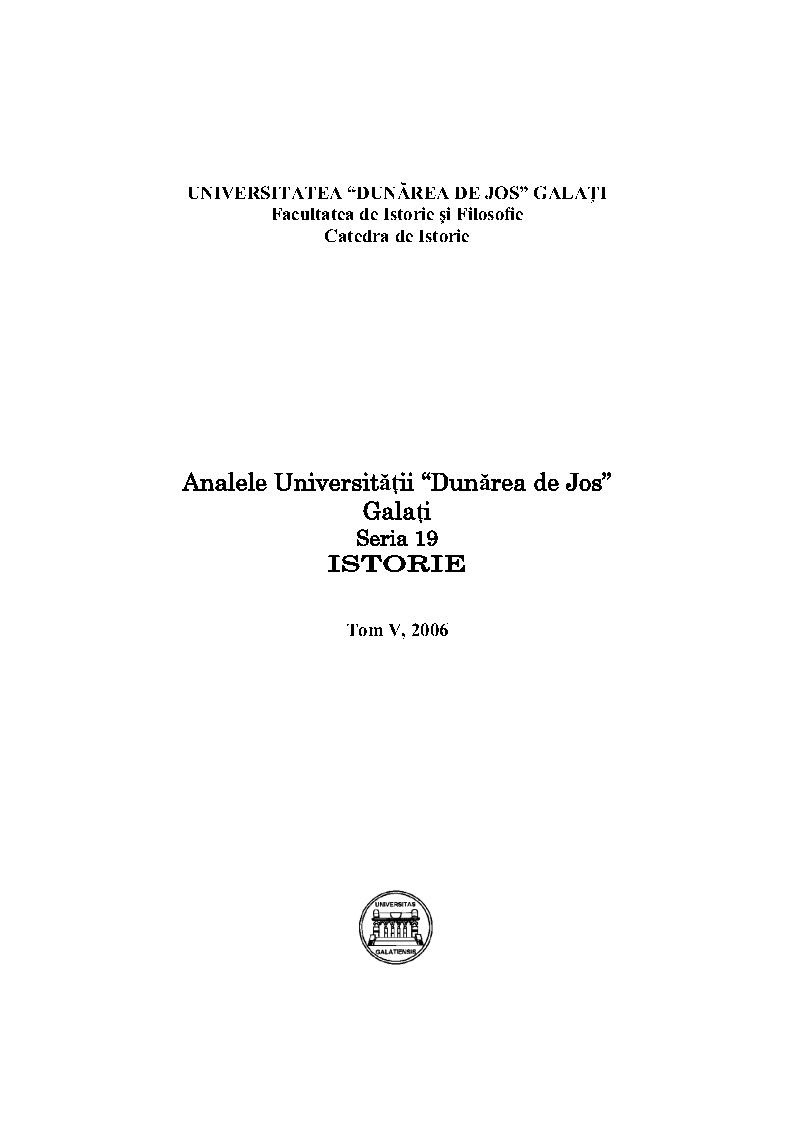DUNĂREA MARITIMĂ ÎN ANII CELUI DE-AL DOILEA RĂZBOI MONDIAL (1941-1945)
THE MARITIME DANUBE DURING WORLD WAR II (1941-1945)
Author(s): Arthur Viorel TulușSubject(s): History
Published by: Galaţi University Press
Keywords: Danube;World War 2;
Summary/Abstract: During World War II, the role of the Maritime Danube in the conflict had different levels of intensity, depending on the position and the evolution of the fronts.1. From June 22nd to July 26th, 1941, the Romanian military forces fought in the first operative line, with the mission to defend the fluvial and maritime littoral. Until July 20th, the Romanians adopted, in the battles with the Soviets, a “defensive-active” attitude, with military actions limited to the Kilia branch of the Danube. Later on, the Romanian forces started an offensive, and until July 26th the entire Bessarabia was liberated.2. From July 26th to August 18th, 1941, the Romanian authorities reorganized the harbour Masters and Offices from the ports of the Maritime Danube, of the Dniester river, of the Pruth; in the same time, the maritime sector of the river was cleared from wrecks and mines. Sporadically, the region continued to be threatened by Soviet air-strikes.3. From August 18th, 1941, to February 1943, the Lower Danube was faraway from the main region of hostilities. Thus, the maritime sector of the river Danube acted as an artery for the transport of provisions for the use of the Axis military forces. The period is marked by the demilitarization of the area and a more intense presence of the German fleet in the Black Sea region.4. From February 1943 to May 1944, the Axis was in defensive, and the repeated defeats brought the front line to be proximity of the Lower Danube region. In April-May 1944, the Romanian fleet had the extremely difficult mission to evacuate the important bridgeheads of Odessa and Sevastopol (army and refugees)5. From June to august 1944, the harbour Constanţa and the interior of the Danube were the last strongholds, on water, in front of the Red Army’s offensive. The naval traffic was, in the biggest part, paralyzed, whereas the ports and the maritime sector of the river were the targets of massive air-strikes. 6. After August 1944, the Danube region entered directly under the custody of the Soviet Union. The Moscow authorities deprived the Romanian state of all sovereignty on the river and, especially, of the instruments for controlling the region: the mobile fluvial infrastructure (ships) passed under the control of the Allied (Soviet) Commanders. In what concerns the situation of the European Commission of the Danube, it must be said that it was deprived of all its competences, but continued to activate with minimum responsibilities through the General Secretariat. The Romanian authorities inherited the rigour which characterized the activity of this institution. Germany wanted its complete dissolution, but the authorities from Bucharest considered that the sovereignty of the Romanian state over the Danube mouths is better respected through the involvement of a consortium of states than in the case in which Romania would face alone the hegemonic pressures of a Great Power (i.e. Germany).
Journal: Analele Universităţii Dunărea de Jos din Galaţi. Seria Istorie
- Issue Year: 2006
- Issue No: 05
- Page Range: 155-193
- Page Count: 39
- Language: Romanian

